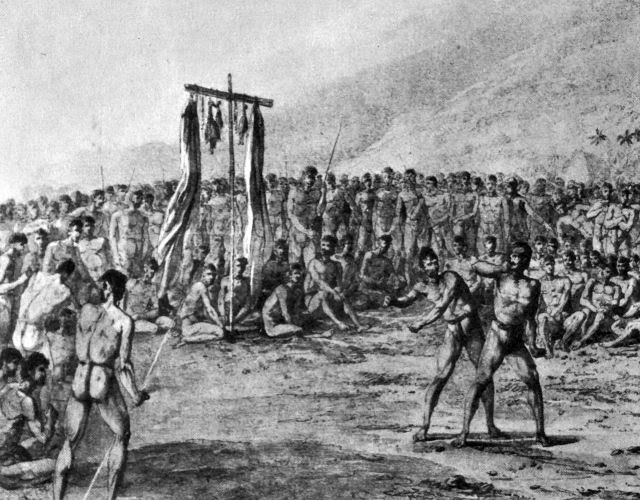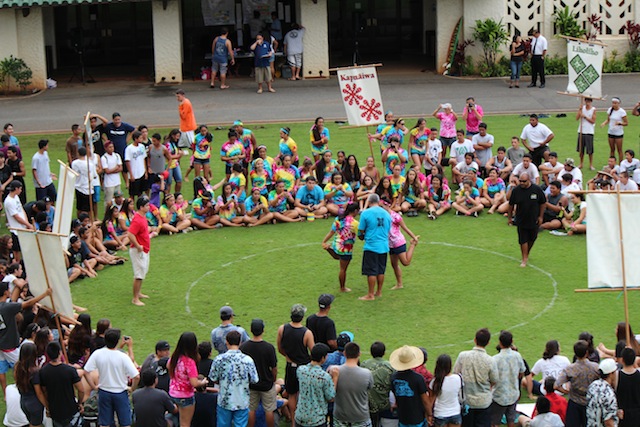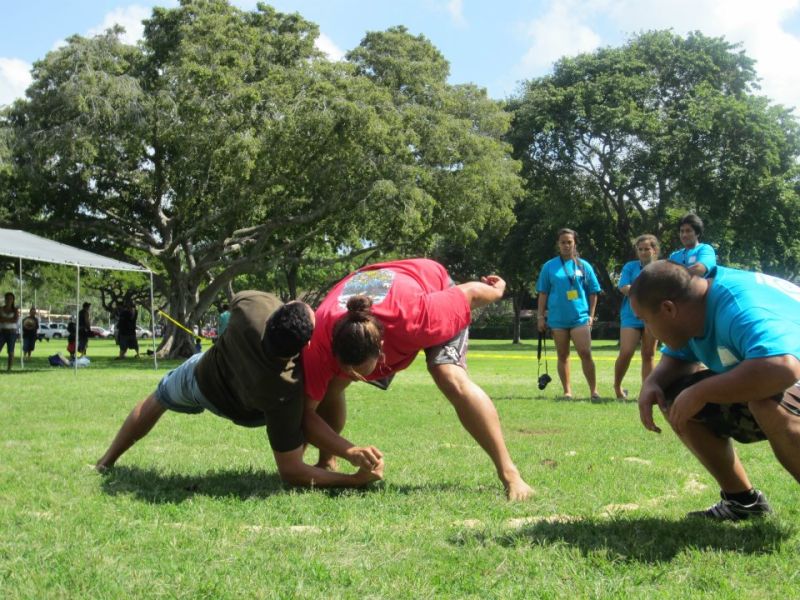Digital Collections
Celebrating the breadth and depth of Hawaiian knowledge. Amplifying Pacific voices of resiliency and hope. Recording the wisdom of past and present to help shape our future.
Lāiana Kanoa-Wong
November 2013
Most people associate Makahiki with games like ʻulu maika, ʻōʻō ihe, hukihuki, pā uma, and haka moa. These games and sports are currently being revived all over ko Hawaiʻi Pae ʻĀina in many public and private schools, in our very own Kamehameha Schools, and in communities both rural and urban. To the casual viewer, these games may appear to be frivolous fun. However, a deeper look would reveal that they are well-designed exercises that develop physical, mental, and spiritual strength. The games and sports that we refer to as "Makahiki games" were activities that were enjoyed year round by people of all ages. Essentially, Makahiki season became a time to showcase skills and strategies that were developed during the year.
The Makahiki season was dedicated to the god Lono, and during this time, wars ceased, certain religious practices were suspended, and major construction works were put on hold. When Makahiki began, the makaʻāinana offered their tribute to Lono and to the aliʻi, in the form of their finest foods, crafts, and clothing. These items were offered with the highest sense of pride in hopes that these gifts came back in the form of blessings from Lono (e.g., rainfall, good growing conditions, and fine crops). Once this process was complete, the people were free to engage in games and leisure to celebrate their year-long hard work. Major tournaments were arranged in the various ahupuaʻa and were attended by entire communities. The champions of each district were esteemed and honored as homegrown heroes. The greatest champions were invited by the aliʻi to challenge the champions of other ahupuaʻa.
The Hawaiian games were exciting and fun to spectate. Reports note how hundreds, even thousands would attend the Makahiki game tournaments. Betting on a favorite champion was a common practice in traditional times. The stakes could be food or other valuables. Some daring souls even bet their lives. This gambling added audience engagement and sense of a "higher stakes" to the matches. It should be no surprise that modern Hawaiians enjoy gambling in places like Las Vegas today.
Our Hawaiian ancestors truly cherished these games and held them dear to their naʻau. Just as we engage in the perpetuation of our culture and language, Makahiki traditions like these games need to be revived as well. Soon, these Hawaiian games and Makahiki traditions will become common practice once more here in Hawaiʻi.
For a comprehensive list of various Hawaiian games with directions to play please refer to Hawaiian Games to Play: Second Edition by Donald D. Kilolani Mitchell, Kamehameha Publishing 2006.
Glossary
ʻulu maika – traditional stone disk rolling game
ʻōʻō ihe – spear-throwing game
hukihuki – tug-of-war
haka moa – traditional one-arm, one-leg wrestling match
Ko Hawaiʻi Pae ʻĀina – Hawaiian Islands/Kingdom
Lono – the Hawaiian god of agriculture, fertility, and peace
makaʻāinana – commoner, people in general; citizen, subject
aliʻi – chief
naʻau – intestines, heart, affections

Mokomoko – The image "Boxing Match Before Cook" was drawn by John Webber who was an artist for Captain Cook in 1778. This image portrayed a Makahiki game tournament that was well attended by thousands of people. The Lono image is prominently presiding over the games, with the men playing a traditional bare knuckle boxing match known as mokomoko.

photo credit: Ofa Peloso, 2013
Pāʻani Makahiki – Kamehameha Schools Kapālama boarders participating in their annual Makahiki Games Tournament. Students are playing the game haka moa, which is a form of human chicken fighting.

photo credit: Leilani Kaʻanoʻi, 2012
Pā Uma – KS Cultural Specialist Lāiana Kanoa-Wong (in red) playing pā uma, a traditional standing arm wrestling match. Photo taken at the annual Makahiki Maoli festival by Pūnana Leo ʻo Honolulu.